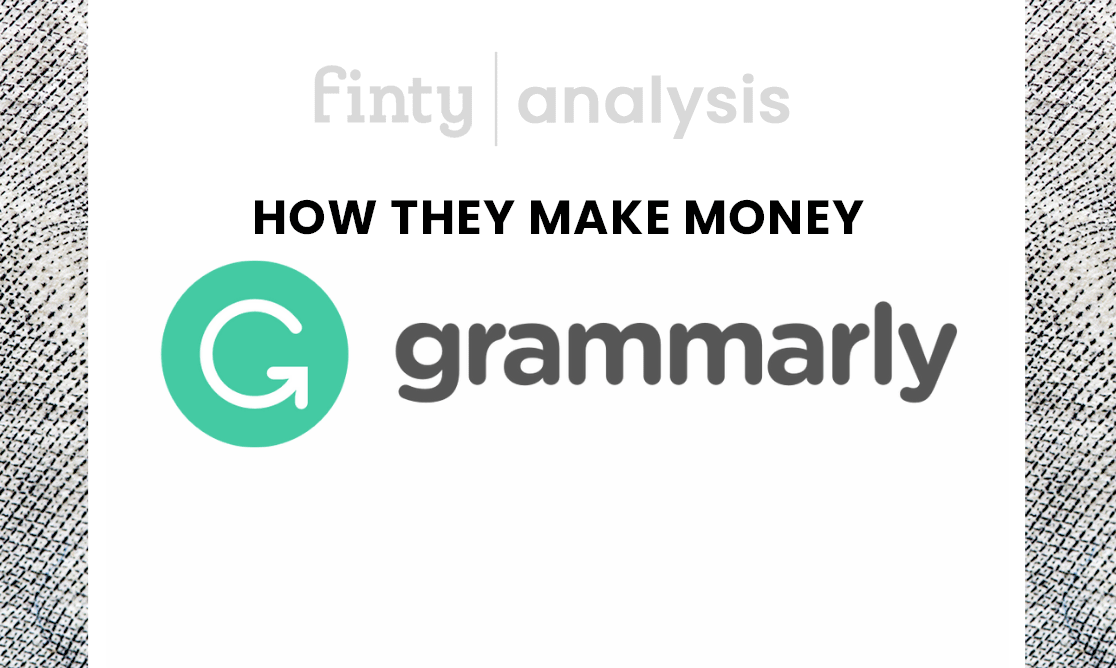- Grammarly is a tech company offering products for improving your writing skills.
- The tool is available as an app, extension, and Microsoft Word plugin.
- Grammarly makes money through a subscription model, and experts suggest the company is not yet profitable.
Ukrainian developers Alex Shevchenko, Dmytro Lider, and Max Lytvyn founded Grammarly in 2009 after raising more than $200 million in venture capital investment. The company is one of the "VC unicorns" of the tech boom over the last decade.
The company has more than 30 million users, with more than 30,000 teams using the software to improve their grammar and writing. The company employs more than 400 people across its four offices in Vancouver, New York, San Francisco, and Kyiv.
Scroll down for everything you need to know about how Grammarly makes money.

Coming up next
What does Grammarly do?
Grammarly is a tech company offering an application to improve writers' grammar and writing style. It's a functional and effective platform, available through a subscription model. Grammarly started as a service for students to improve their understanding and use of English.
The initial model was to sell their software to universities under a license agreement model. The university would hand it out for free to students requiring assistance with their language skills. However, the company decided to expand its offering to the public after a weak response from educational institutions.
Over the years, Grammarly grew its market footprint extensively, adding tens of millions of users. The company started adding third-party applications and integrations to the product, expanding its utility.
How does Grammarly work?
Grammarly is a SaaS application designed to help writers improve their language skills. Users upload a document to the platform, and the AI checks it for grammar and spelling errors at the click of your mouse.
It also offers plagiarism checks and options for proofreading by the Grammarly team. Grammarly's tools assess the writer's tone, conciseness, clarity, vocabulary, and delivery style, making suggestions to the user to improve the document's quality.
The Grammarly online editor offers users a browser extension for Chrome, Firefox, Safari, and Edge. It also has a desktop editor for macOS and Windows.
Grammarly uses the cloud and AI for real-time grammar correction, with natural language processing (NLP) algorithms and deep learning tools that constantly update the utility and efficacy of the platform at correcting work.
How Grammarly makes money
Grammarly makes money by offering users a subscription service for its platform. The company has several revenue streams attached to this model. Let's unpack these offerings in detail.
Subscriptions
Grammarly makes money by offering a premium subscription model to commercial and private users. The company has a free browser extension but with limited functionality.
The company relies on this free model to demonstrate its value to the user in the hope of them signing up for a premium subscription.
Grammarly offers subscriptions in monthly, quarterly, or annual packages, with discounts for longer subscription periods. It also provides a business plan targeting companies with teams of three to 149 users.
Grammarly@EDU
Alongside its premium and business plans, Grammarly offers its services to universities and other educational institutions. Known as the "Grammarly@EDU" brand, it's a popular tool implemented by more than 1,000 academic partners.
Grammarly claims that more than 99% of its student users experience improvement in their writing and grades by using the software. More than 70% of Grammarly students report an increase in their writing confidence and capabilities when using the tool.
Human proofreading service
Grammarly also offers writers a human proofreading service. Suppose you're not confident in your abilities. In that case, you can have someone on the Grammarly team check and correct your work for an additional fee.
Future growth engine
Grammarly raised over $200 million in two rounds of VC funding. Currently, the company has a valuation of more than $1 billion, launching it into the legendary "VC Unicorn Club" in Silicon Valley. However, as a private venture-backed startup, Grammarly doesn't disclose any revenues publicly.
The company saw strong growth in 2020, 2021, and 2022 as more people flooded the digital gig economy. However, since the company is in its growth phase, we speculate that it has yet to turn a profit for investors.
Competitors
Grammarly competes with other online writing and grammar checking platforms. Microsoft Word and Apple Pages are built-in grammar checkers offering many of the same tools as you get with Grammarly.
However, there are also plenty of other competitors in the space. Some of Grammarly's biggest competitors include the following companies:
- ProWritingAid
- Sapling
- WhiteSmoke
- Ginger
- PaperRater
- Reverso
- SentenceCheckup
- Hemingway App

